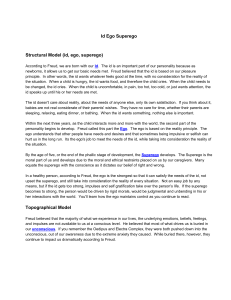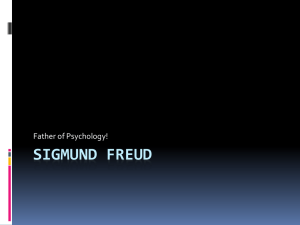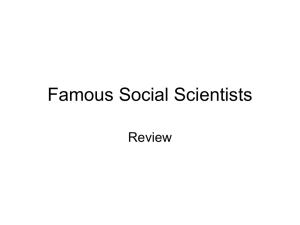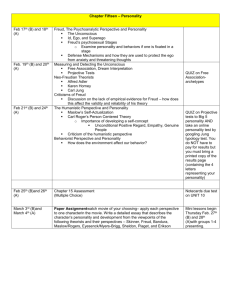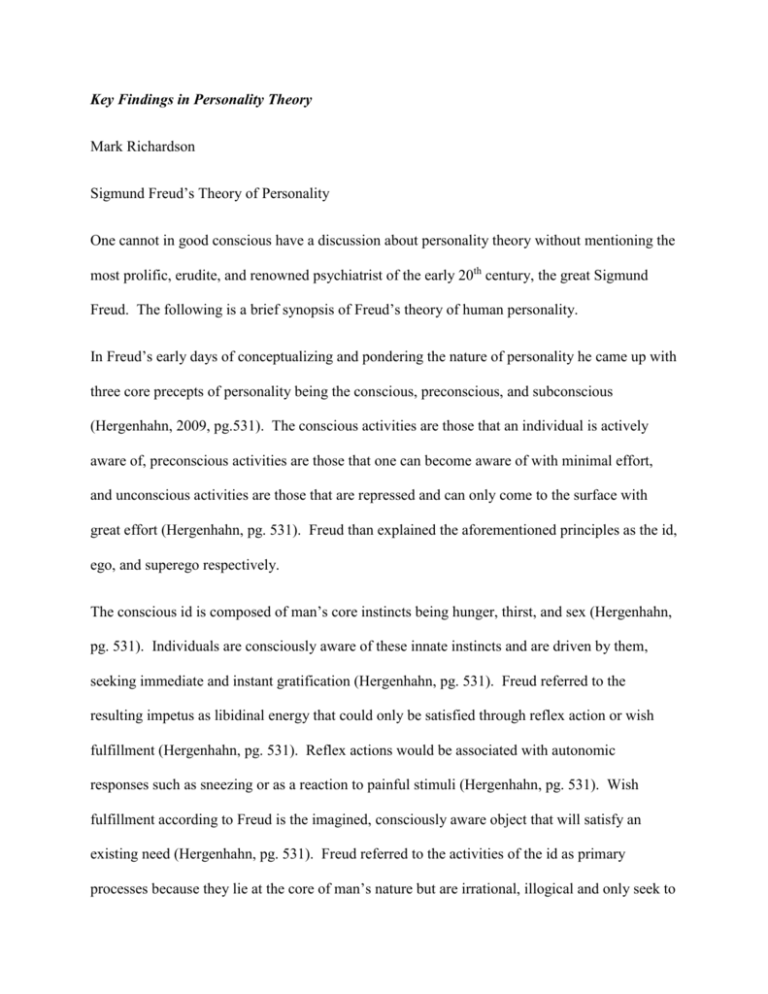
Key Findings in Personality Theory
Mark Richardson
Sigmund Freud’s Theory of Personality
One cannot in good conscious have a discussion about personality theory without mentioning the
most prolific, erudite, and renowned psychiatrist of the early 20th century, the great Sigmund
Freud. The following is a brief synopsis of Freud’s theory of human personality.
In Freud’s early days of conceptualizing and pondering the nature of personality he came up with
three core precepts of personality being the conscious, preconscious, and subconscious
(Hergenhahn, 2009, pg.531). The conscious activities are those that an individual is actively
aware of, preconscious activities are those that one can become aware of with minimal effort,
and unconscious activities are those that are repressed and can only come to the surface with
great effort (Hergenhahn, pg. 531). Freud than explained the aforementioned principles as the id,
ego, and superego respectively.
The conscious id is composed of man’s core instincts being hunger, thirst, and sex (Hergenhahn,
pg. 531). Individuals are consciously aware of these innate instincts and are driven by them,
seeking immediate and instant gratification (Hergenhahn, pg. 531). Freud referred to the
resulting impetus as libidinal energy that could only be satisfied through reflex action or wish
fulfillment (Hergenhahn, pg. 531). Reflex actions would be associated with autonomic
responses such as sneezing or as a reaction to painful stimuli (Hergenhahn, pg. 531). Wish
fulfillment according to Freud is the imagined, consciously aware object that will satisfy an
existing need (Hergenhahn, pg. 531). Freud referred to the activities of the id as primary
processes because they lie at the core of man’s nature but are irrational, illogical and only seek to
be satisfied (Hergenhahn, pg. 531). It is not rational to have sex at any given moment when the
urge arises or to act aggressively when a pertinent stimulus is present, so the ego is present in the
psyche to monitor the impulsive id.
The ego is the mediator between the id and the external environment (Hergenhahn, pg. 532). It
is the function of the ego to look for realistic outlets for the id that are not just conjured or strictly
imagined (Hergenhahn, pg. 532). These mental processes known as secondary processes are an
essential component of consciousness, the purpose being to modify the aggressive, avaricious,
and unquenchable urges of the id. The ego looks for appropriate environmental stimuli to satisfy
the urges of the id that will result in the least resistance and negative recourse (Hergenhahn, pg.
532). The last component of the Freudian personality is the superego which completes the
balance of the conscious and unconscious, which if not present would reduce man to that of the
average beast (Hergenhahn, pg. 532).
The superego is the moral component of consciousness that balances the id and ego through trial
and error experience. An example would be the newborn baby that sees a bottle of milk on a hot
stove top, touches it, and recoils in pain. This experience would be retained by the superego and
would monitor the urges of the id if exposed to a similar dangerous stimulus (Hergenhahn, pg.
532). As a child progresses through development, the superego is sharing a symbiotic
relationship with the id and ego resulting in synthesis through parenting resulting in socialization
(Hergenhahn, pg. 532). This process continues and guilt results from actions that the ego may
find to be appropriate, but are morally repressed through the superego (Hergenhahn, pg. 532). It
is the conflict of these components of personality that can result in what Freud in his day referred
to as hysteria, contemporarily known as mania.
When World War I began, Freud and others were deeply disturbed by the amount of sheer
violence and death taking place all over the planet. Freud was so vexed that he came up with
two additional components of personality associated with love (passion) and death.
He coined the term eros as a secondary term for libido and sex energy, contrasted with thanatos
which is the death instinct (Hergenhahn, pg. 533). When the death instinct is directed from an
internal disposition, the results can be suicide, masochism, cutting, and other forms of selfmutilation (Hergenhahn, pg. 533). The results of this instinct being projected strictly towards
others is intuitive; genocide, mass murder, torture, and extreme malice. As a result of these
concepts, Freud came to the correct conclusion that aggression is an innate and key component to
the human personality (Hergenhahn, pg. 533)



